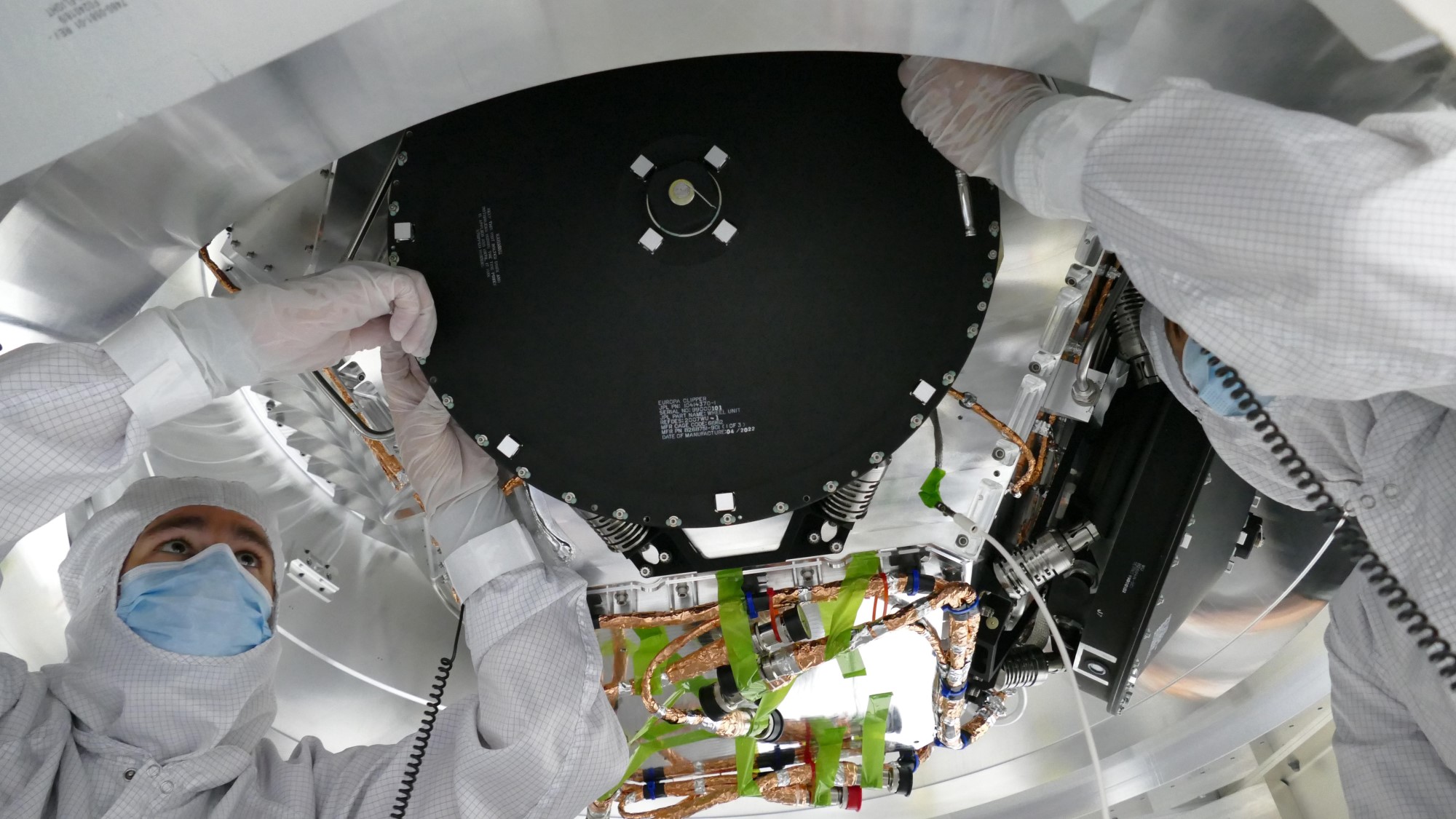
[ad_1]

NASA’s bold mission to explore Jupiter’s icy moon is facing tight schedules getting instruments installed and ready for the planned 2024 launch.
Europa is a particularly tantalizing destination because scientists believe that, under its icy crust, the moon hides a global ocean — and that the ocean may be the sort of place where life could survive. That’s why NASA designed its Europa Clipper mission, meant to launch in 2024, arrive at Jupiter in 2030, and fly past Europa dozens of times. Engineers are assembling the spacecraft in a clean room in NASA’s Jet Propulsion Laboratory (JPL) in California, but many of the mission’s instruments are behind schedule, starting to cause serious concerns.
“You should recognize that every person you see in a bunny suit is a hero,” Curtis Niebur, a project scientist at NASA, said during a meeting of the Outer Planets Assessment Group held on Nov. 16, referring to the protective gear engineers wear in the clean room. “That ATLO team is bending over backwards to accommodate all of the late deliveries, including instruments.” (ATLO refers to Assembly, Test and Launch Operations; you can watch the assembly process live, thanks to a broadcast from JPL.)
Related: Behold! Our closest view of Jupiter’s ocean moon Europa in 22 years
Europa Clipper will carry 10 key instruments, including cameras, magnetic field sensors and devices to identify materials on the moon’s surface. But with less than two years to go before launch, only three of those instruments have been installed on the main spacecraft body, and five haven’t yet arrived at JPL.
And time is getting tight.
“The ATLO people have expended all of their magic,” Niebur said. “Any further delay is going to eat directly into the schedule margin we have.”
During the meeting, Tim Larson, project manager for Europa Clipper at JPL, ran through the status of each instrument, as well as other key spacecraft components. The spacecraft’s solar array panels are being connected in the Netherlands, for example, while two instruments are expected to arrive at JPL within the next couple of months. Since the presentation, JPL announced that engineers have installed the four reaction wheels that will keep the spacecraft properly pointed. And engineers at JPL have received the spacecraft’s high-gain antenna and a dust analyzer, Larson said.
One instrument, the Mapping Imaging Spectrometer for Europa (MISE), is particularly worrying since engineers aren’t confident enough to give the instrument a target delivery date. MISE is designed to analyze light reflecting off Europa’s ice to map the composition of the surface. But the testing campaign has revealed multiple issues for engineers to work through, Larson said. “That’s the one instrument right now where we have open issues that are getting work and we don’t have a solid sense yet on how long it will take to get finished up.”
The assembly process does have some flexibility, he noted, since engineers can rearrange the order of their tasks. But that only goes so far.
“It’s very important that they all stick to those delivery schedules,” Larson said of the instruments still in testing. “If we start slipping from those, then we start finding difficult decisions we have to make in how to accommodate them.”
Email Meghan Bartels at [email protected] or follow her on Twitter @meghanbartels. Follow us on Twitter @Spacedotcom and on Facebook.
[ad_2]